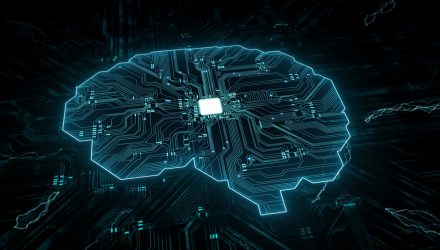In the universe of disruptive technologies, artificial intelligence is one of the deepest, most durable themes, and that status is meaningful to strategies like the ARK Autonomous Technology & Robotics ETF (CBOE: ARKQ).
ARKQ holdings “are focused on and are expected to substantially benefit from the development of new products or services, technological improvements and advancements in scientific research related to, among other things, energy, automation and manufacturing, materials, and transportation,” according to ARK Invest.
What makes AI an exciting investment prospect is its intersection with other disruptive growth themes. The ideas acts as a sort of backbone for an array of products and services.
“We believe that since AI is embedded in many products and services, the cost and latency of running compute tasks on data center servers are more relevant and could become prohibitive,” states ARK research. “Jem Davies, an ARM fellow, highlighted this point by explaining how a voice-enabled coffee maker could consume up to $15 a year in cloud computing costs. For applications like self-driving in which the decision time is critical, the latency and cost associated with servers hundreds of miles away could become life-threatening.”

More ‘ARKQ’ Angles
Data center demand is another marquee market for AI, and one with excellent long-term potential.
“Given the limitations of data center server processing, enterprises are beginning to push compute workloads to the edge. Apple’s FaceID is a good example,” notes ARK. “Because the iPhone – not a server – hosts the biometric data and AI that power FaceID, users can activate airplane mode, turn off WIFI, and still use FaceID. This edge computing paradigm reduces latency, minimizes computing costs, and eliminates the liability associated with faulty data.”
Investors should consider machine learning and supercomputers as benefactors of AI advancements in the years ahead.
“Edge computing is central to ARM’s recently announced v9 architecture. The new architecture will support Scalable Vector Extensions 2 (SVE2), a mathematical specification that underpins the Fugaku supercomputer. Excitingly, SVE2 support could enable CPUs to perform complex matrix-based calculations that otherwise would offload to GPUs. As a result, we believe more robust machine learning and data processing should happen at the edge, perhaps giving coffee makers the ability to recognize voices without help from servers hundreds of miles away,” finishes ARK.
For more on disruptive technologies, visit our Disruptive Technology Channel.
The opinions and forecasts expressed herein are solely those of Tom Lydon, and may not actually come to pass. Information on this site should not be used or construed as an offer to sell, a solicitation of an offer to buy, or a recommendation for any product.

